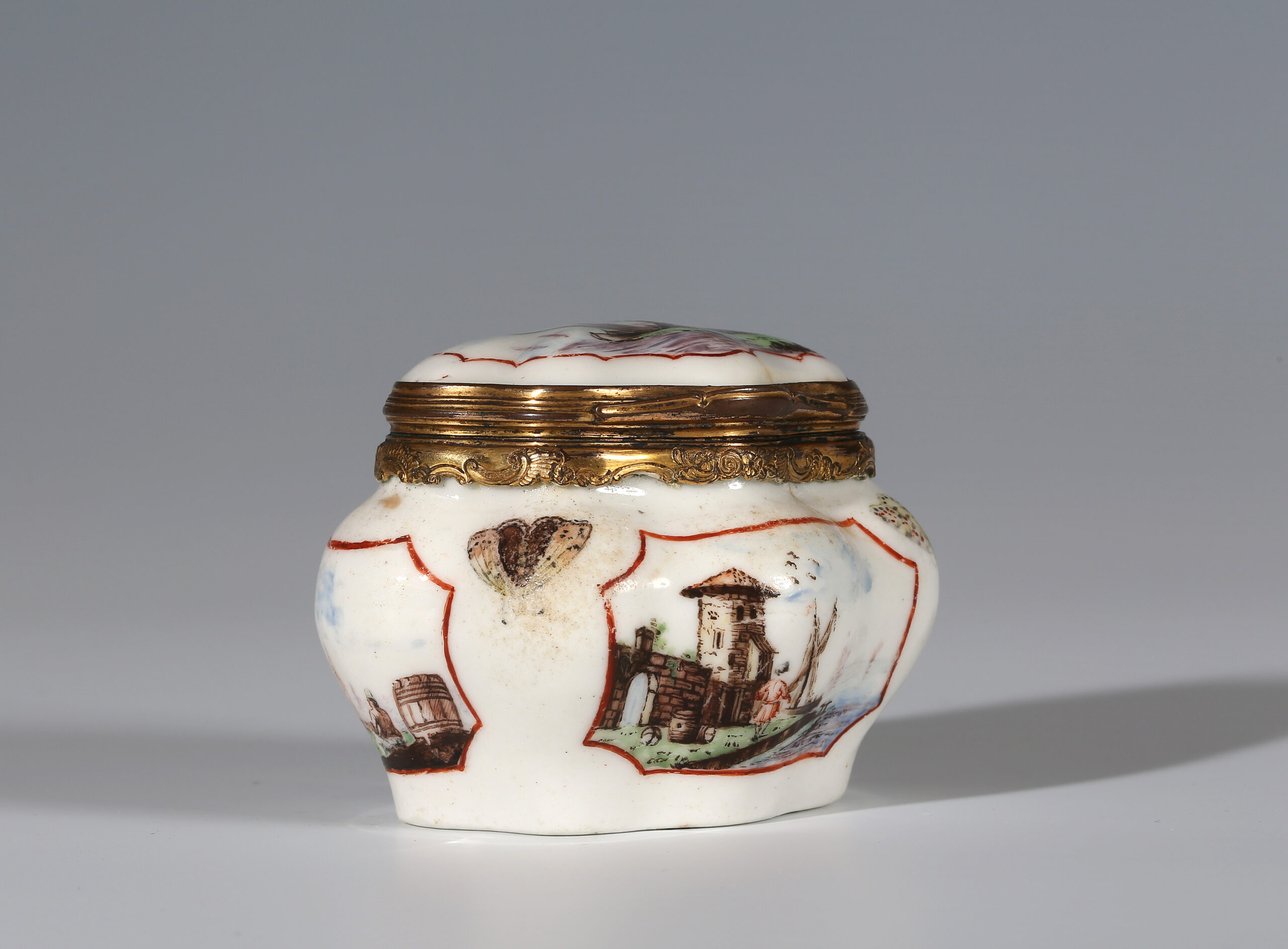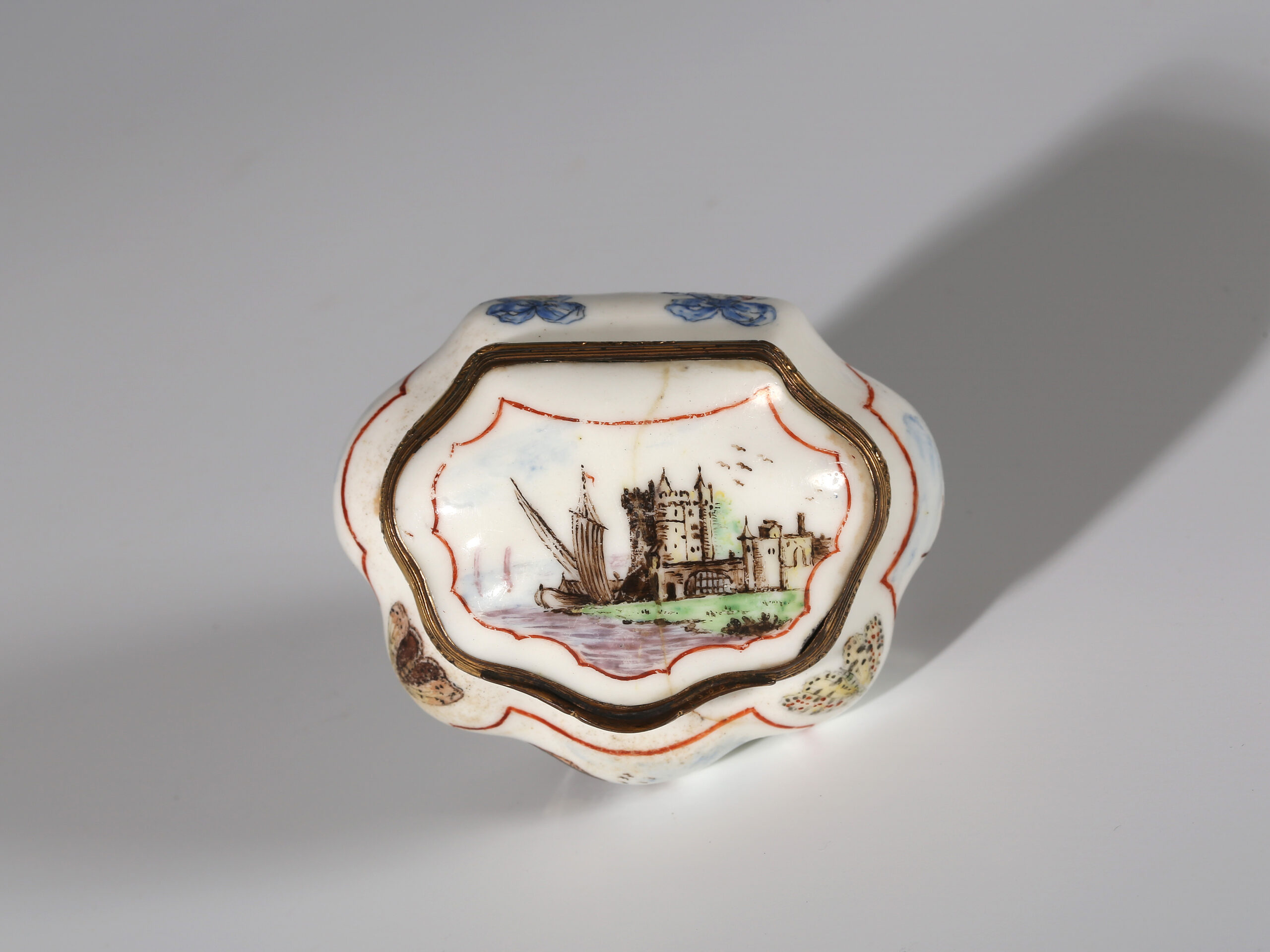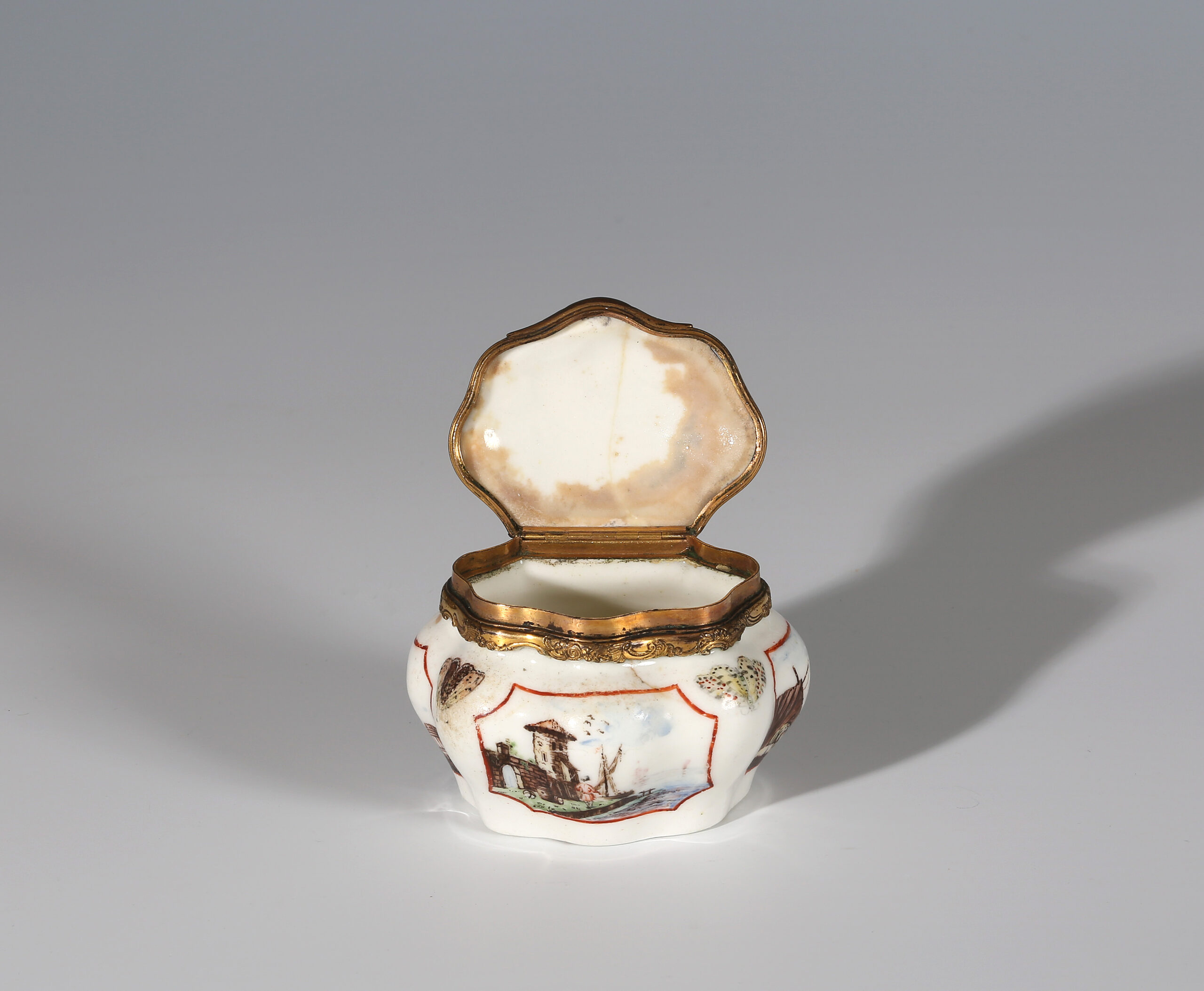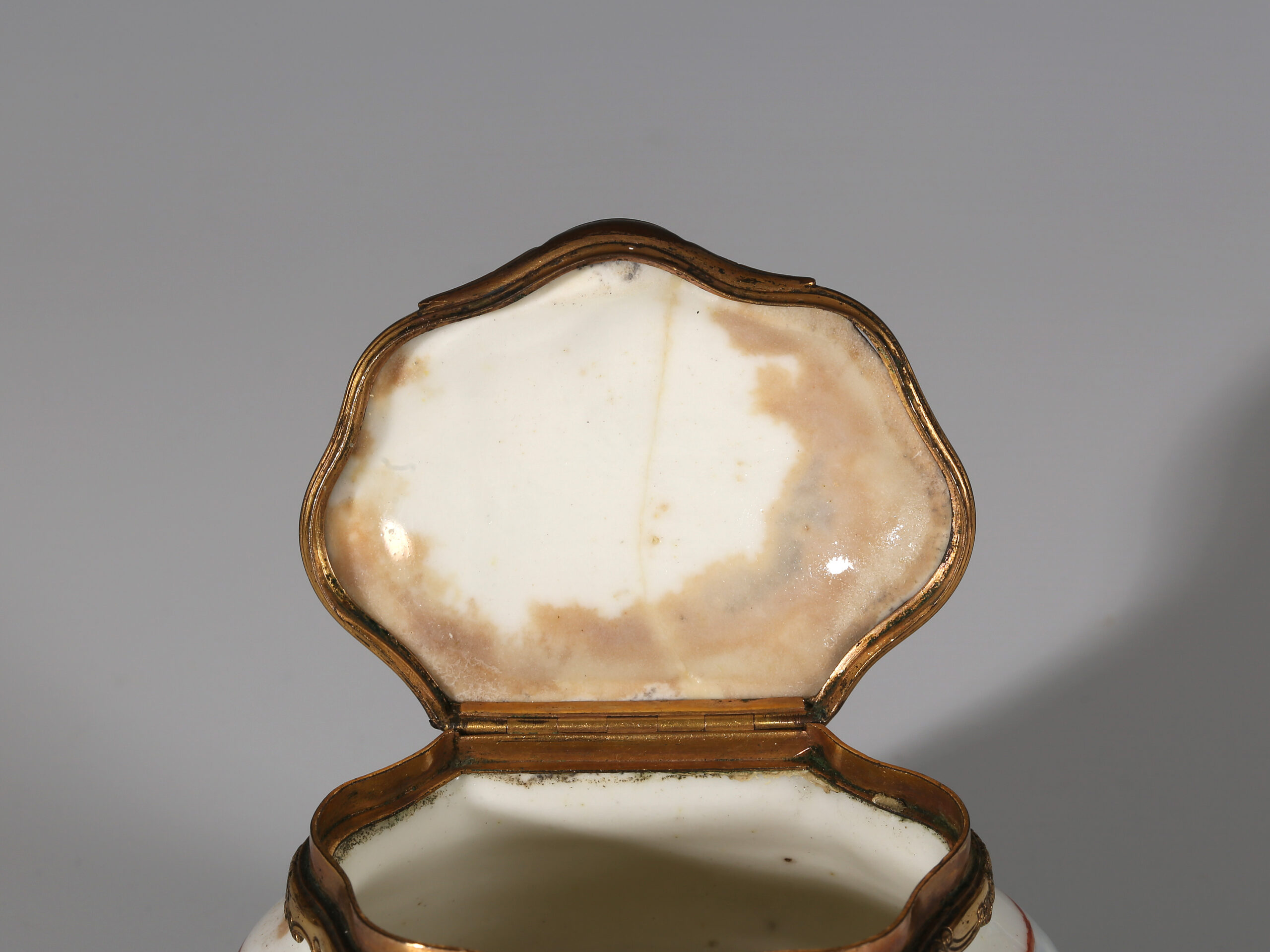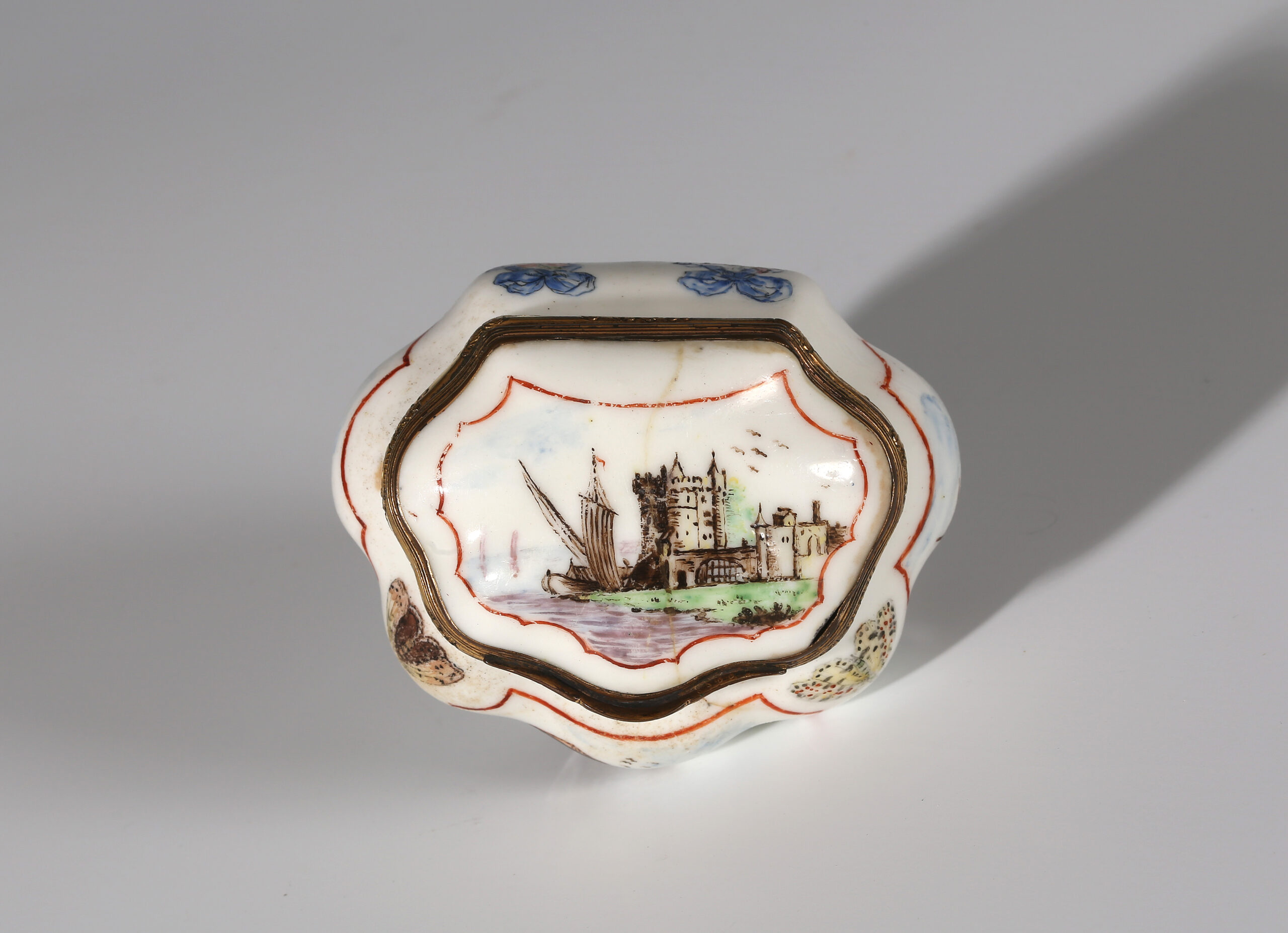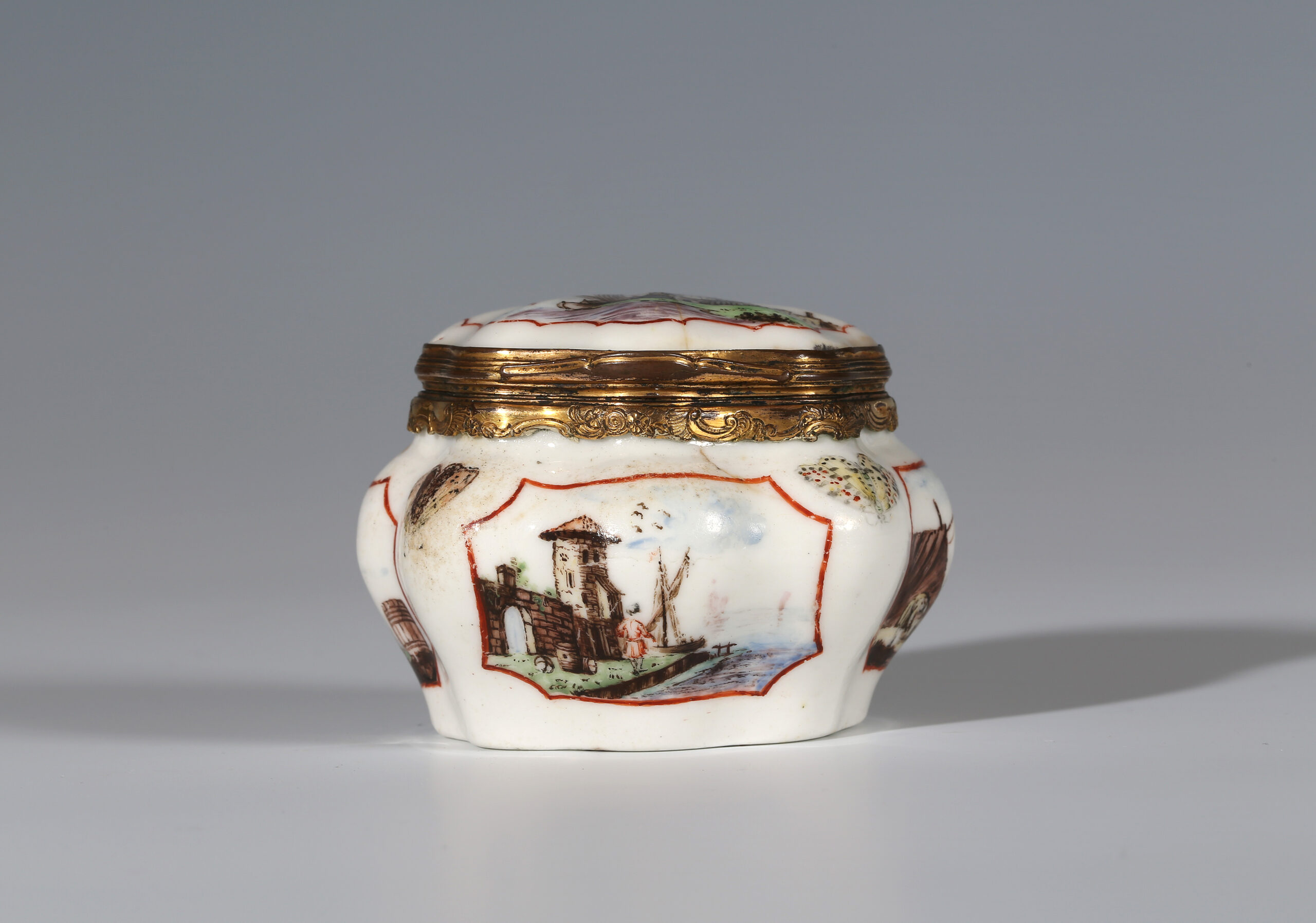
This is the only recorded Chelsea snuff box of the Triangle Period. It is painted with four harbour scenes, based loosely on Meissen or early Vincennes prototypes (which were themselves also based on Meissen), within simple iron-red cartouches interspersed with moths and a garland of flowers on the reverse. The clear glaze with no hint of tin oxide suggests a date early in the Triangle Period, as does the painting for reason explained below.
The same hand, painting buildings in riverscapes in iron-red cartouches, is found on two remarkable Chelsea silver-shaped sauceboats marked with triangles in underglaze blue which were sold in 2009[i].
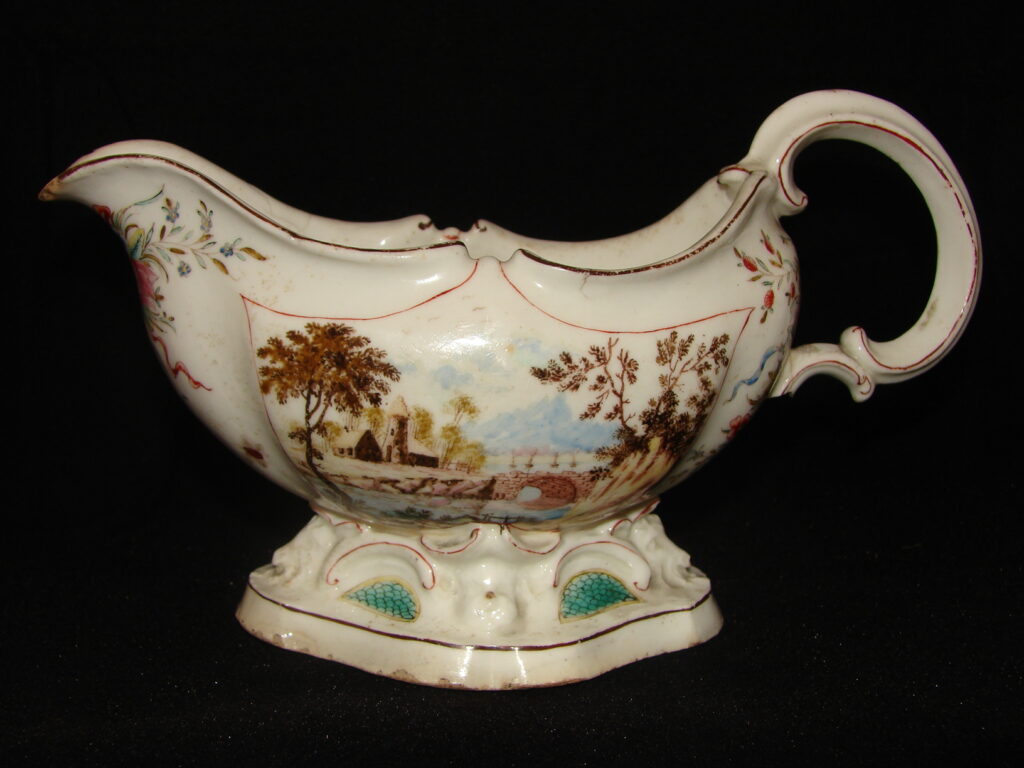
One of the pair of Chelsea sauceboats
These landscapes can also be linked to the painting on a snuff box of the ‘A’-marked class, which has been identified as the porcelain from the first patent of Thomas Frye and Edward Heylyn of December 6th, 1744, which evolved into the Bow porcelain factory[ii].
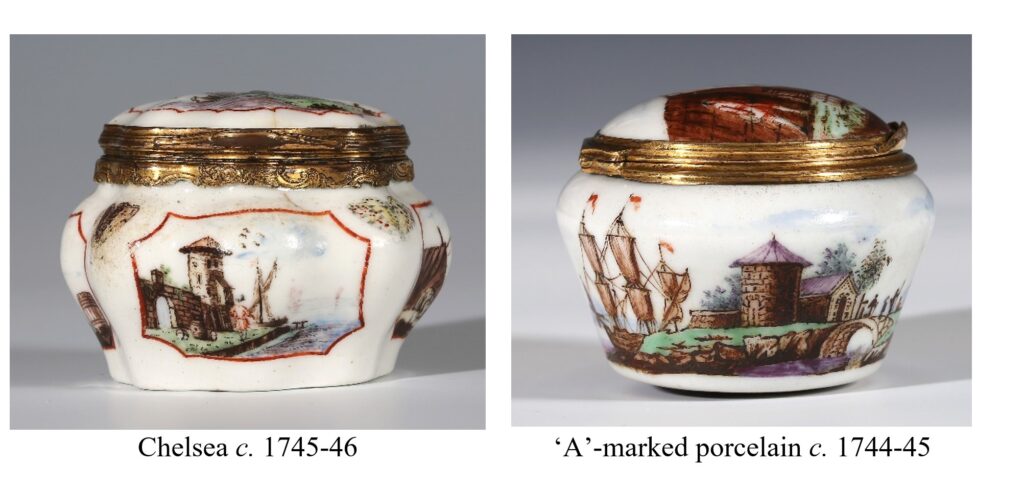
The garland of flowers suspended from blue ribbons on the reverse of our box can also be linked to the flower painting on the Chelsea sauceboats, which in turn can be shown to be by the same hand that painted on ‘A’-marked porcelain. The identification of this anonymous hand that worked in London on both early Chelsea and ‘A’-marked porcelain was first noted and discussed in a paper ‘A’-marked Porcelain and Chelsea; a connection delivered to the ECC in 2007[iii].

On the 9th August 1750, Lord Chesterfield sent a snuff box to France to the Marquise de Monconseil in Paris, which cost him ‘only two livres, less than a quarter of what one would have to pay for the same thing in Dresden’ and remarked ‘how well we imitate the Dresden china’ [iv]. Although a few years later, it is tempting to identify this comment with our box since no other early Chelsea box is known, it is probably a little too early for a St James’s example and they did not imitate Meissen. Alternatively they could have been referring to an ‘A’-marked example.
On a personal note, it has been very gratifying to buy this box back because we first acquired it early in our career in 1989 and always regretted not being able to study it further. I only had a poor snapshot of it and did not know its whereabouts. I had sold it to the dealer Peter Williams who was acting for Stanley Goldfein who we never met.
[i] These were sold by Frank Marshall & Co., Knutsford, in September 2009, bought by Simon Spero. They were published and discussed by Patricia Ferguson in the TECC. Ferguson 2013 pp. 22 & 23 where she also discusses the availability of Meissen in London in the 18th century
[ii] For a detailed discussion of this ‘A’ marked box see Ramsay, Howell, Edwards, Manners & Howkins 2023
[iii] Manners 2007 b
[iv] See Manners 2007 p. 456 and Clarke 1959 pp. 45-57
Condition:
Fine crack across the lid and another of 1.5 cm from the neck. Star crack in interior of the base. Staining visible on the inside of the lid, areas of glaze mis-firing.
Provenance:
Sotheby’s, London, 17th October 1989, lot 453
The Stanley Goldfein Collection
References:
Clarke 1959
T. H. Clarke, French Influences at Chelsea, ECC Transactions, Vol. 4, Pt. 5. 1959, pp. 45 -57
Ferguson 2013
Patricia Ferguson, ‘The Earls of Enniskillen at Florence Court, a 1754 Chelsea auction in Dublin and the Irish market and the so-called ‘Warren Hastings’ pattern’, ECC Transactions, Vol. 24, 2013
Manners 2007
Errol Manners, ‘Some Continental Influences on English Porcelain’, English Ceramic Circle Transactions, vol. 19, pt. 3, 2007
Manners 2007 b
Errol Manners, ‘‘A’-marked Porcelain and Chelsea; a connection’, English Ceramic Circle Transactions, vol. 19, pt. 3, 2007, pp. 471 – 475
Ramsay, Howell, Edwards, Manners & Howkins 2023
‘Geochemical Investigation of a Ceramic Snuff Box: ‘A’-Mark English Porcelain Attribution confirmed, with W. Ross Ramsay, Howell G. M. Edwards, Errol Manners, and Ashley Howkins’, Ceramics in America 2023
Price: £16,500



